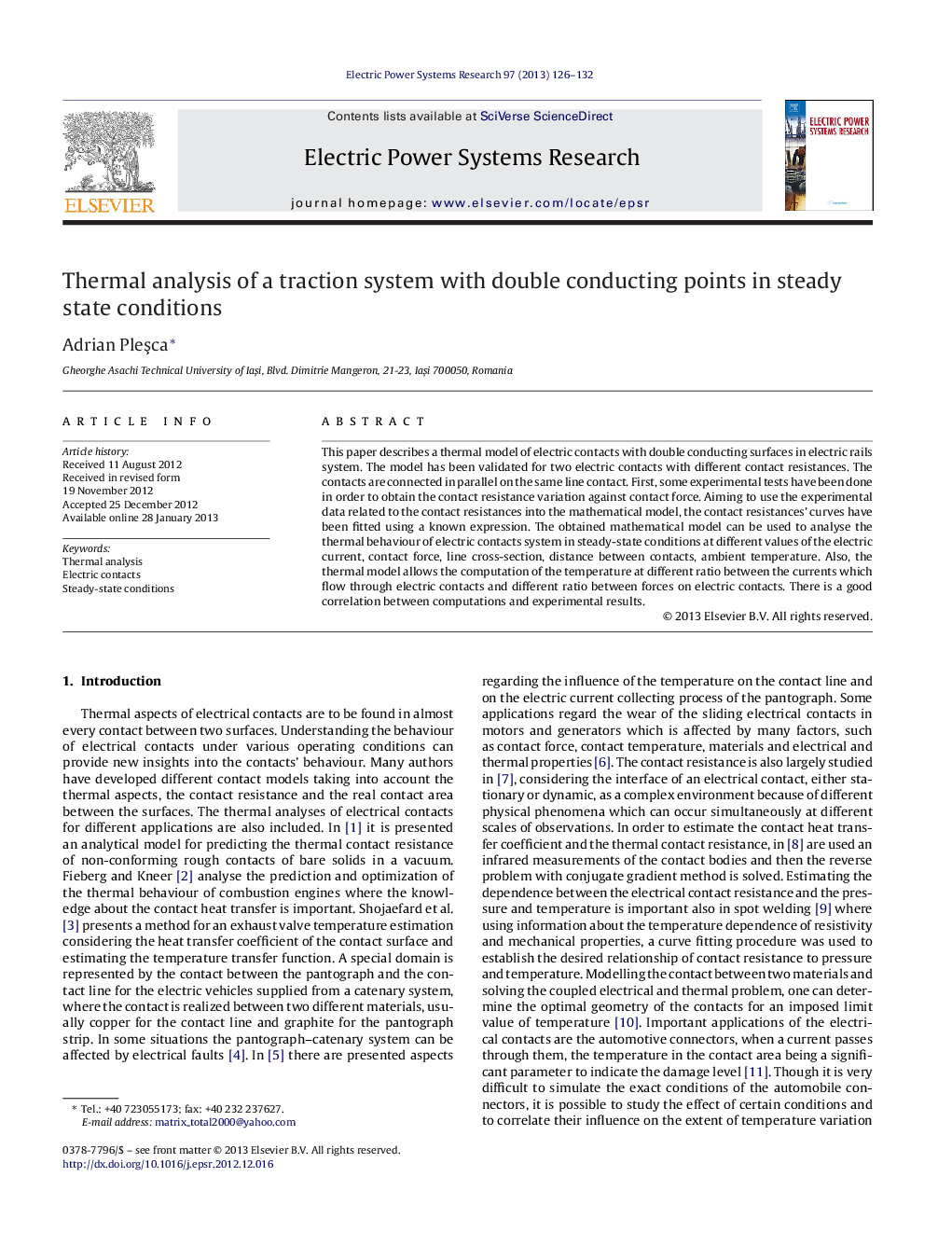| کد مقاله | کد نشریه | سال انتشار | مقاله انگلیسی | نسخه تمام متن |
|---|---|---|---|---|
| 705078 | 1460916 | 2013 | 7 صفحه PDF | دانلود رایگان |

This paper describes a thermal model of electric contacts with double conducting surfaces in electric rails system. The model has been validated for two electric contacts with different contact resistances. The contacts are connected in parallel on the same line contact. First, some experimental tests have been done in order to obtain the contact resistance variation against contact force. Aiming to use the experimental data related to the contact resistances into the mathematical model, the contact resistances’ curves have been fitted using a known expression. The obtained mathematical model can be used to analyse the thermal behaviour of electric contacts system in steady-state conditions at different values of the electric current, contact force, line cross-section, distance between contacts, ambient temperature. Also, the thermal model allows the computation of the temperature at different ratio between the currents which flow through electric contacts and different ratio between forces on electric contacts. There is a good correlation between computations and experimental results.
► A mathematical model for thermal analysis of electric contacts with double conducting surfaces has been established.
► The mutual influence of the both different thermal sources, because of different contact resistance, has been analysed.
► The thermal model can be used to analyse the thermal behaviour of electric contacts from electric traction system.
► The mathematical model can be generalized and used for a system with “n” electrical contacts.
Journal: Electric Power Systems Research - Volume 97, April 2013, Pages 126–132